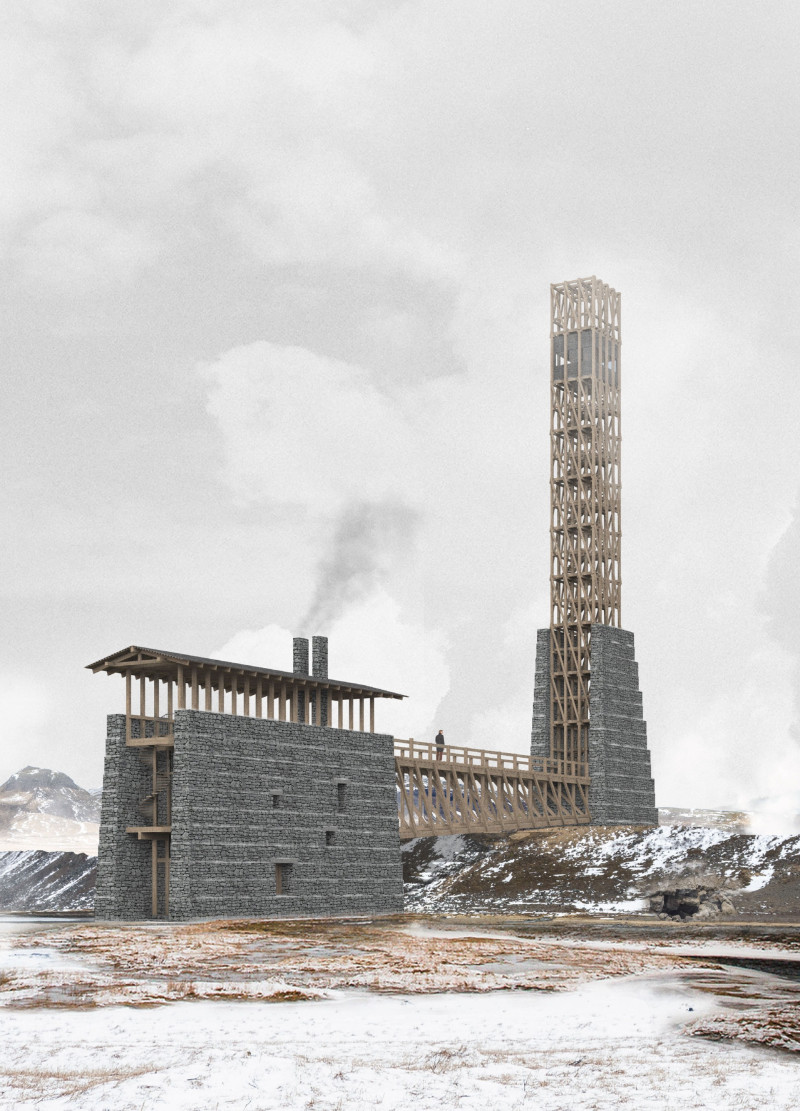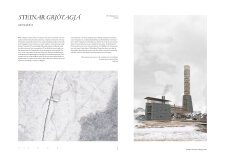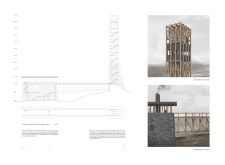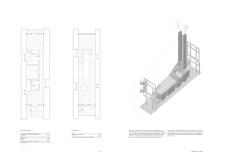5 key facts about this project
The Steinar Grjótagjá Gestahús project is located in Iceland, at the Grjótagjá caves where the European and American tectonic plates meet. This site serves as a gathering place for visitors, providing a space that promotes connection with the remarkable natural landscape. The design centers around establishing links between the two tectonic plates through carefully arranged structures that enhance the experience of the unique geological context of the area.
Guesthouse
The guesthouse sits on the European plate and acts as the heart of visitor interaction. Its insulated design offers both comfort and hospitality, with spaces that encourage social engagement. A prominent feature is the fireplace, which invites communal activities and shared moments. The overall atmosphere prioritizes warmth, making it a welcoming space for guests.
Observation Deck
Next to the guesthouse is an observation deck that transitions visitors from indoors to the vastness of the outdoors. This platform provides an opportunity to take in rich views of the surrounding landscape. It also marks the beginning of the bridge that connects to another structure, emphasizing its functionality in linking visitors to the broader environment.
Open Bridge
The open bridge is an important feature, allowing movement over the cave system's unique geological formations. It connects the European plate with the American plate and encourages guests to appreciate the geological details below. The design maximizes views, allowing visitors to experience the striking features of the caves and their surroundings.
Observation Tower
On the American plate, a 40-meter-tall observation tower offers an elevated perspective of the area. Visitors can climb to this tower for sweeping 360-degree views, with a warm booth at the top providing shelter. This space enhances the experience, allowing for comfortable observation of the breathtaking Icelandic landscape.
Locally sourced stone is used for the foundational pylons of the project, creating a strong connection to its rugged environment. These pylons not only provide structural support but also resonate with Iceland’s architectural heritage. The arrangement of spaces and choice of materials underscore the relationship between the built environment and nature, firmly rooting the structures within their geological setting.






















































